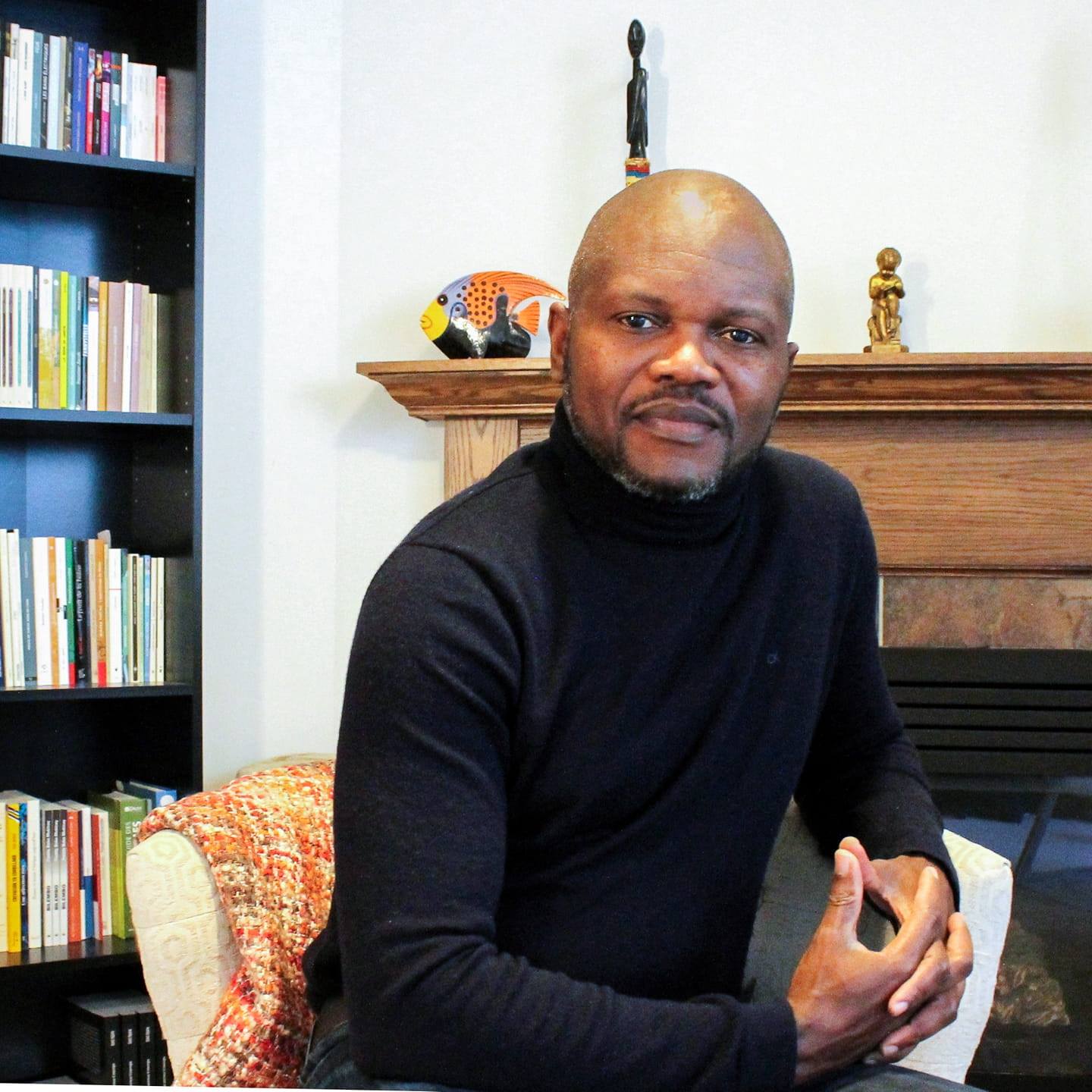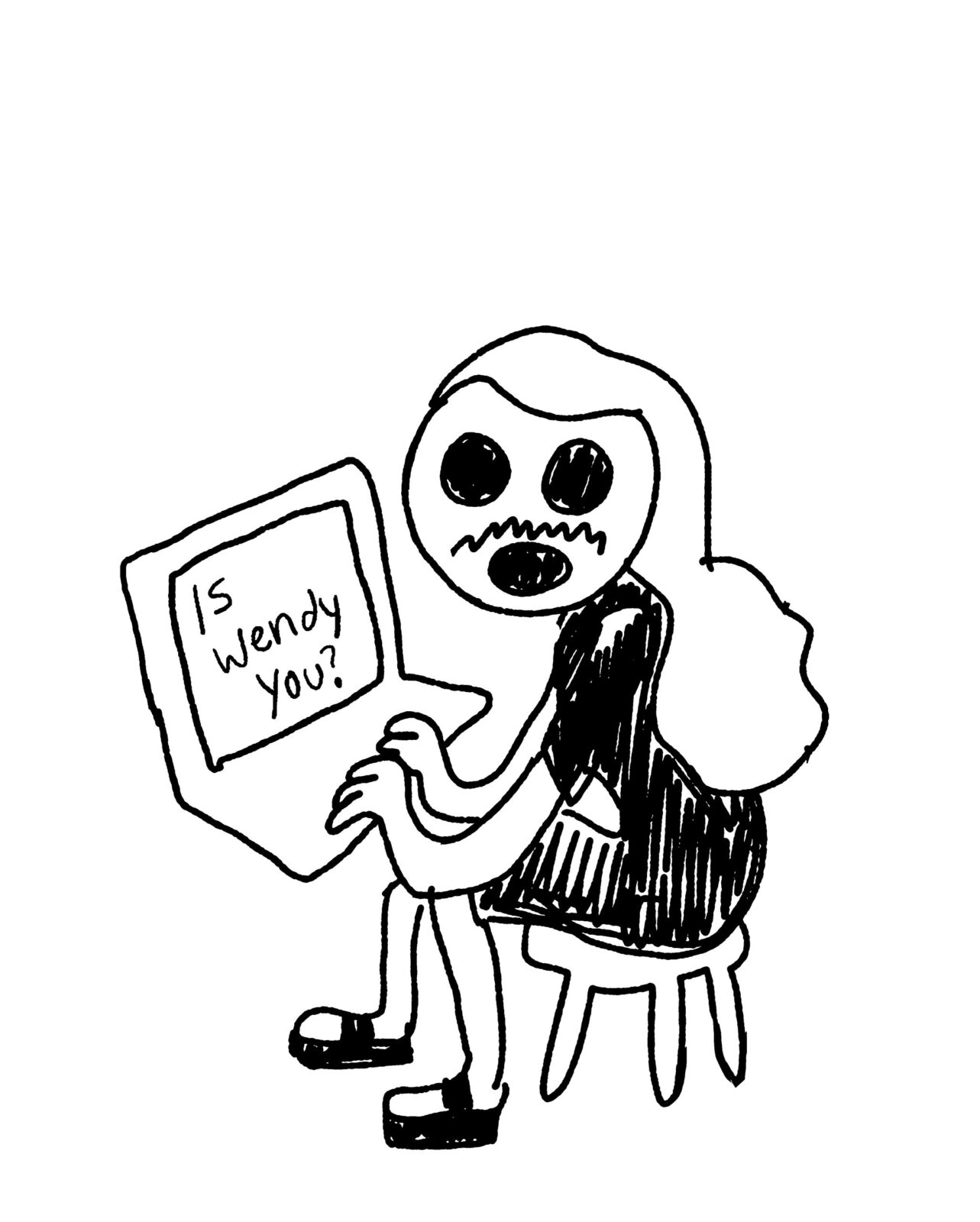The Portable Conundrum
Andy Brown (editor)
conundrum press
$15
paper
312pp
1-894994-14-0
Climbing the stairs to the Mainline Theatre Space, you can already hear the excitement swelling as the party gets underway. Inside, publisher Andy Brown mans an impressive table of publications, ranging from chapbooks to full-length titles.
Throughout the evening, many familiar faces mill in and out of the theatre space. For anyone who has ever been involved in the spoken-word scene – either as a spectator or a performer – it’s a trip down memory lane, a sort of homecoming for Anglo literary hipsters.
Many of conundrum’s contributors are here tonight to present their work. Catherine Kidd, the very first contributor to the press, looks right at home, her throaty laugh punctuating others’ performances as she waits her turn at the mike. Her black-and-white wig echoes the content of her theatrical literature performance, “Human Fish,” a thought-provoking look at humanity’s destructive tendencies, from her latest book/DVD Bipolar Bear. Prancing brazenly before an elaborate slide show, she fills the room with outrageous cleverness.
More reserved is visual artist and animator Elisabeth Belliveau. Too shy to address the audience, she remains seated as her claymation film, Perfect, is presented. Fragments of text caress images characterized by softness and harmony of colour. Like “How to Lead a Double Life,” Belliveau’s submission to The Portable conundrum, Perfect whispers sensitivity. As the film ends, a roar of applause contrasts with her shyness.
Launched the same evening is Valerie Joy Kalynchuk’s Beauty is a Liar. Its striking cover images (on the front, a birthday cake rests between the pointed toes of a perfectly poised ballerina; on the back, the cake is squashed beneath flat feet) mirror the author’s writing. Exploring the schism between sunny social conventions and the narrator’s penchant for darker sights and sounds, Kalynchuk’s vignettes break with tradition, both in content and style. While a few sections are written in standard prose, most are of the stream-of-consciousness variety, sentence fragments challenging the limits of language, pleasantly jarring the reader with a sequence of sensations and dramatic details.
Though variety is clearly on the menu, there is a common ingredient linking all the contributors here. When I meet up with Brown later, we discuss how conundrum publications often defy categorization in the traditional sense, whether through format, style, or content. I ask him to comment on the press’s mandate – “to publish half graphic novels and half experimental fiction” – and how it’s evolved over the years.
“Initially, it was always (to) find interesting projects, interesting writing or art, and package it in an interesting way – and then try to get it out there,” he recalls. “And then expose this writing that is unique, that essentially wouldn’t get published anywhere else in a conventional way.
“At the time, ironically, there were a lot more venues to sell stuff like that,” Brown comments, referring to chapbooks and zines. “Now there’s none. People expect more establishment-oriented stuff.”
For Brown this has meant some rethinking in terms of how to package and present his product to booksellers. For example, now he’s more likely to publish a collection rather than a series of zines. But Brown has remained true to his original vision. “Now it’s basically the same thing,” he chuckles, “but I call it a graphic novel. The content is essentially the same, it’s just longer.”
We’re chatting in the kitchen of “conundrum Towers Estate,” a term Brown coins in his ironic introduction to The Portable conundrum, referring to the press’s headquarters. Located in the apartment downstairs from his St-Dominique Street residence, his office area is comfortable, yet considerably less luxurious than what’s described in the book. As one might expect, money isn’t the motivating factor when it comes to running a small English-language press in Montreal. Asked what inspired him to get into the business, Brown reminisces about how a side project quickly grew into something more formal. “At the beginning, it was very much a Montreal thing, and I was filling what I perceived as a gap in Anglophone culture in the late 90s, post-referendum. But at the time I wasn’t so much self-consciously doing that, I was just kind of doing what I was doing. At one point I realized that I was part of this community, mostly the spoken-word community,” he recalls. “As more and more people became invested in me doing (this), I had to start thinking, ‘Okay, this is not just a hobby. I’m providing a service. I’m part of a community, and maybe I should give it a name.”
Though Brown’s publications are evolving in format, it’s clear that a lot of thought still goes into their design. True to its title, The Portable conundrum carries well due to its compact shape. And the cover is fun. Complementary colours – yellow and fuchsia – highlight illustrations by two contributors, Billy Mavreas and Marc Ngui. Asked what inspired the design, Brown pulls out of a copy of one of his “all-time favourite books,” The Portable Poe. “I wanted to take that 1950s feel, that old-time nostalgic thing, and do a portable book that represented not one person but one press.”
For such a small book, The Portable conundrum packs an impressive amount of material. “For me it’s obviously a big nostalgia project. But it’s also at the same time about the future, because there’s people in there whose books I haven’t published yet,” Brown says, clearly pleased with the results.
Including Brown’s own piece, a satirical look at the artistic community, there are contributions from 34 writers and artists. There is a good balance between images and text, and the material is for the most part either new or previously unpublished. Some pieces dig deeply into personal themes, while others remain fairly light and playful. And although some will inevitably appeal more than others, there is enough variety to satisfy a wide range of tastes. Highlights include pieces by Amanda Marchand, Liane Keightley, Dana Bath, Robert Allen, and Brown’s wife, Meg Sircom.
One thing some may find curious, and perhaps a touch disappointing, is the near absence of political themes. According to Brown this was not a conscious decision, although he admits to often finding overtly political pieces lacking in subtlety. He does, however, bring a couple of titles to the Anarchist Book Fair every year, and some of his authors, such as Corey Frost, explore themes like globalization indirectly, using humour and postmodern tricks. “I feel that just doing what I do, the way I do it, is a political statement against the establishment of publishing in Canada,” says Brown. “And just being here,” he adds laughingly, referring to the decision to publish in Montreal rather than Toronto, “is political.” mRb






0 Comments